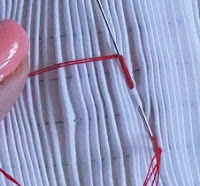In Canada we celebrate Thanksgiving in October and our family gathers up at our cottage where usually the leaves are wonderful rich reds, oranges, gold and light yellow. This year didn't quite give us those brilliant reds.
On Thanksgiving Tues we left on a trip to Atlanta for the Smocking Arts Guild of America convention at the Peach Tree Plaza Hotel. It was an interesting drive as neither my husband nor I had been through Kentucky or driven through Tennessee! It took less time than we thought and so we arrived a day earlier than we had planned - what a bonus to have a day to prepare for all we wanted to do.
 |
| Meehan's Public House the Irish Pub where we ate one night. |
So Wed. evening I took in a fashion show put on by "Peanut Butter 'n Jelly Kids" at the Meet & Greet followed by the Teacher's Meeting. On the Thursday evening they held the Show and Share along with the Design Show and the Teachers' Show Case. I brought a number of class samples for display for the Showcase and met so many great ladies from all over the country. We ran overtime and I really didn't get to see either of the other two displays.
 |
| SAGA Kits for purchase in Hospitality |
Then on Friday afternoon through the evening the big event was the Market and we had a really busy booth.
Bob introduced his new rod system for the pleating machines, the "Select-a-Size" and I showed the new infant girls' dress and diaper cover. Both got rave reviews and as soon as we can get these ready for sale they will be posted on the web site and here as well.
Saturday morning found us back on the road again. We drove straight home and unpacked so Bob could do a quick turn around to drive to Edmundston, New Brunswick to check on his elderly mother.
Bob got back Sunday just in time for hurricane Sandy. In fact he drove through torrential rains most of the way home and Sandy didn't even hit until last night, Monday. Where we are, an hour north of Toronto, after all the hype, the storm turned out to be a non-event (thank goodness). We had stocked up on extra drinking water, food, a spare tank of gas for the BBQ, batteries and all the things they told us we should have on hand for a lengthy time without power. All was normal when we woke this morning but south of us, in Toronto there was a fair bit of damage and power failures. Our son-in-law was in Manhattan on a work-related visit so he is going to have a few adventures to tell. We've be e-mailing back and forth and he is fine - a bit wet but surviving. Bet he can't wait to be home!

 So after all the boxes were unpacked and everything put away, I got side tracked with a request that truly intrigued me. A lady from Utah had written before our Thanksgiving to ask if I could create a pattern for a baby boy's tuxedo jacket to go with the Infant Wardrobe I. Here are the photos she sent to show me the type of tuxedo jacket she needed.
So after all the boxes were unpacked and everything put away, I got side tracked with a request that truly intrigued me. A lady from Utah had written before our Thanksgiving to ask if I could create a pattern for a baby boy's tuxedo jacket to go with the Infant Wardrobe I. Here are the photos she sent to show me the type of tuxedo jacket she needed.Now the Infant Wardrobe I pattern (in case you are not familiar with it) contains a pattern for a tailored boy's shirt, pants, bow tie and jacket along with a kilt, tam and girl's variation on the shirt and a wee jabot. She had figured out a vest and only needed the jacket. At first I dismissed the idea as too much work for a one time pattern but this lady convinced me to give it a 'go'. I did and here is the finished jacket.
So my question to you is would this be of interest for wedding, special occasions, baptisms, christenings or blessings? Should I grade the pattern to include all the sizes found in the Wardrobe or leave it? Right now it is only in Size 11 pounds.
Now it is back to finishing the little girls' dress pattern. One more test sample to create and then it is the writing and illustrations. The pattern pieces are now done, labelled and nearly ready to go to print. Keep an eye on this site as I will soon be posting photos.
So till next time, keep stitching.....











































